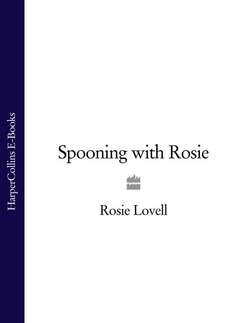Читать книгу Spooning with Rosie - Rosie Lovell - Страница 11
Mum’s Seedy Soda Bread
ОглавлениеMakes 2 loaves
Soda bread is a wonderful cheat’s bread. It makes for an encouraging initiation into the world of baking, so get cracking. My mother skilfully leavened abundant firm loaves practically daily, decorated with beautiful wheatears and laden with seeds. But for me, it felt like a whole other level of kitchen excellence, slightly out of my reach. By its very nature, soda bread does not require all the leavening and kneading of a normal yeast loaf, so don’t be shy. And once you can see the texture that it needs to be, sloppy but nutty, like a moist porridge, you can be free to throw in whatever you want: poppy seeds, dried herbs, sesame seeds, olives, pumpkin seeds. And you can substitute the sugar here with good honey, for a deeper flavour. Making two loaves, you can put one in the freezer for a rainy day, but if you just want to bake one loaf, divide the quantities below in half.
Of course there’s something deeply impressive about baking your own bread, so I frequently find myself making Mum’s soda bread when I’ve got people over for dinner. It’s so easy: make the bread first (as soon as you get in the door), and while it’s in the oven you’ll have time to prepare some other knick-knacks for dinner. It’s particularly delicious with my favourite salmon and fennel pâté (see page 95) and a crunchy salad. And incidentally, it’s slightly lower in gluten due to the spelt flour.
a small knob of butter
200g wholemeal flour, plus a little more for dusting the bread tins
300g spelt flour
4 tablespoons bran
2 tablespoons wheat germ
2 heaped teaspoons baking powder
Maldon sea salt
1 tablespoon muscovado sugar
4 tablespoons sesame seeds
1 tablespoon caraway seeds
2 teaspoons coriander seeds
100g linseeds
565ml semi-skimmed milk (milk on the turn is even better)
Preheat the oven to 200°C/Gas 6. Butter two traditional 900g bread tins (about 19 × 11cm) and then lightly flour each one, banging it around so that the base and sides are lightly dusted. Set these aside. Measure out the flours, bran, wheat germ, baking powder, salt, sugar and seeds into a big mixing bowl. With a fork toss around to evenly distribute the flours and seeds. Then measure out the milk and gradually mix it in with the fork. It should look sloppy, so don’t worry if it doesn’t look how you imagine bread dough to be. The reason it is so wet is so that it makes for a really deep flavour, once everything has been dehydrated by the baking process.
Turn this mix out evenly between the two bread tins, which will require you to use a spatula to get all the liquidy cakey mix out. Place in the oven for 25 minutes. It should have risen by this point and be crisp and cracking on the top. Then turn the oven down to 170°C/Gas 3 and continue baking for a further hour and 10 minutes.
Once removed from the oven, turn out the loaves on to a cooling rack for an hour. If they are baked right, they should make a hollow sound when tapped on the bottom. These loaves are best when they have been cooled for a few hours or overnight. Eat for breakfast, lunch and dinner with unsalted butter.
